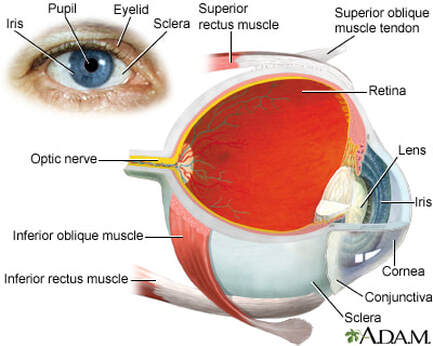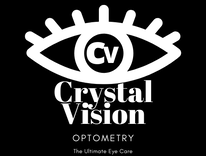Red eye - ocular emergencies
|
At Crystal Vision Optometry, we strive to meet all of your eye and vision care needs. Red eye and ocular emergencies are other of the services provided by Dr. Truong, Red eye is an eye that appears red due to illness or injury. It is usually injection and prominence of the superficial blood vessels of the conjunctiva, which may be caused by disorders of these or adjacent structures. Conjunctivitis and subconjunctival hemorrhage are two of the less serious but more common causes.
Dr Truong will assess whether emergency action (including referral) is needed, or whether treatment can be accomplished without additional resources. |
Slit lamp examination is invaluable in diagnosis but initial assessment can be performed using a careful history, testing vision (visual acuity), and carrying out a penlight examination.
Usually non-urgent
- Blepharitis: a usually chronic inflammation of the eyelids with scaling, sometimes resolving spontaneously
- Subconjunctival hemorrhage: a sometimes dramatic, but usually harmless, bleeding underneath the conjunctiva most often from spontaneous rupture of the small, fragile blood vessels, commonly from a cough or sneeze
- Inflamed pterygium: a benign, triangular, horizontal growth of the conjunctiva, arising from the inner side, at the level of contact of the upper and lower eyelids, associated with exposure to sunlight, low humidity and dust. It may be more common in occupations such as farming and welding.
- Inflamed pinguecula: a yellow-white deposit close to the junction between the cornea and sclera, on the conjunctiva. It is most prevalent in tropical climates with much UV exposure. Although harmless, it can occasionally become inflamed.
- Dry eye syndrome: caused by either decreased tear production or increased tear film evaporation which may lead to irritation and redness
- Acute glaucoma angle closure type
- Airborne contaminants or irritants
- Tiredness
- Drug use including cannabis
- Episcleritis: most often a mild, inflammatory disorder of the 'white' of the eye unassociated with eye complications in contrast to scleritis, and responding to topical medications such as anti-inflammatory drops.
- Acute angle closure glaucoma: implies injury to the optic nerve with the potential for irreversible vision loss which may be permanent unless treated quickly, as a result of increased pressure within the eyeball. Not all forms of glaucoma are acute, and not all are associated with increased 'intra-ocular' pressure.
- Injury
- Keratitis: a potentially serious inflammation or injury to the cornea (window), often associated with significant pain, light intolerance, and deterioration in vision. Numerous causes include virus infection. Injury from contact lenses can lead to keratitis.
- Iritis: together with the ciliary body and choroid, the iris makes up the uvea, part of the middle, pigmented, structures of the eye. Inflammation of this layer (uveitis) requires urgent control and is estimated to be responsible for 10% of blindness in the United States.
- Scleritis: a serious inflammatory condition, often painful, that can result in permanent vision loss, and without an identifiable cause in half of those presenting with it. About 30–40% have an underlying systemic autoimmune condition.
- Tick-borne illnesses: like Rocky Mountain spotted fever the eye is not primarily involved, but the presence of conjunctivitis, along with fever and rash, may help with the diagnosis in appropriate circumstances.

